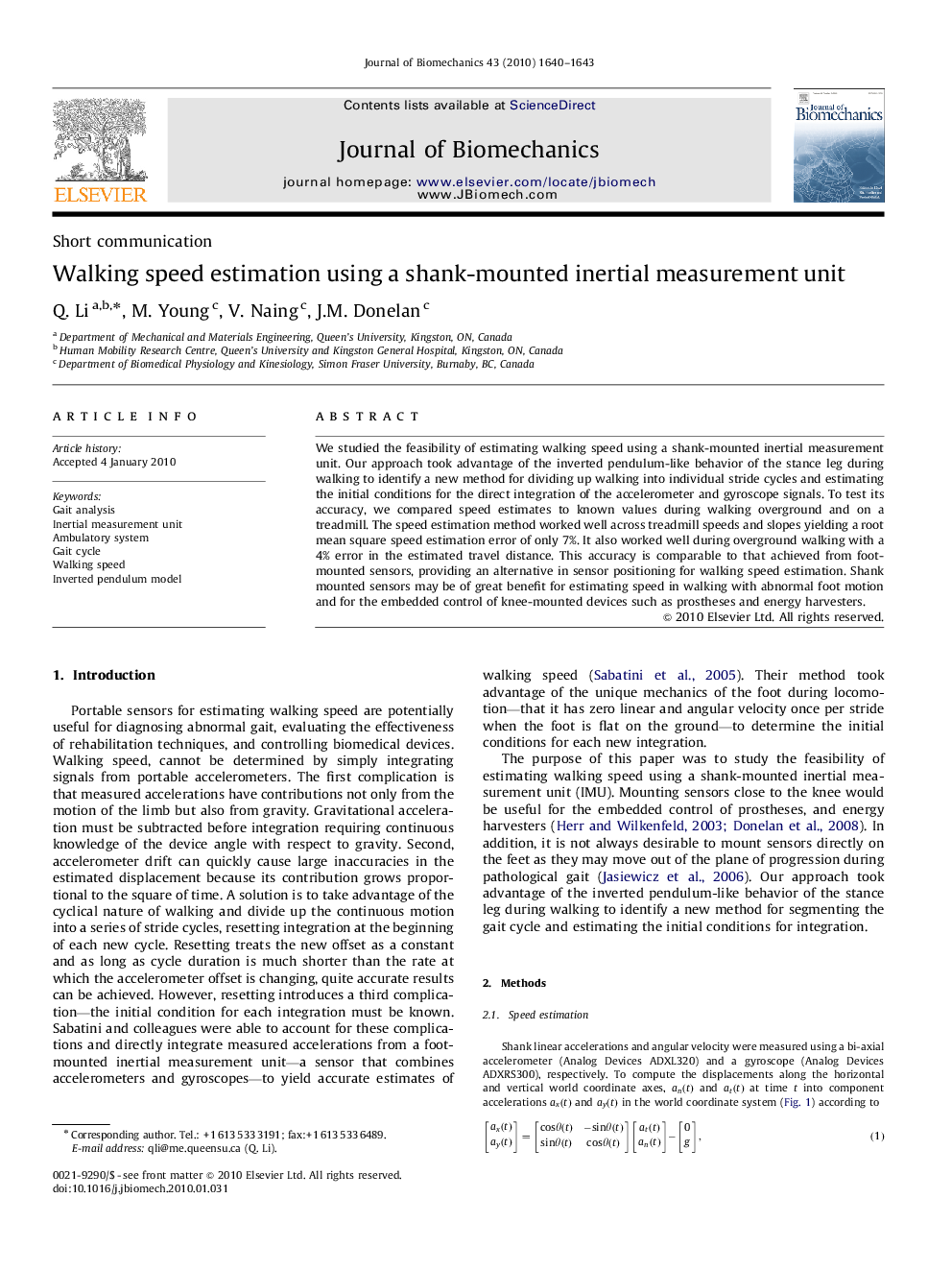| Article ID | Journal | Published Year | Pages | File Type |
|---|---|---|---|---|
| 873546 | Journal of Biomechanics | 2010 | 4 Pages |
We studied the feasibility of estimating walking speed using a shank-mounted inertial measurement unit. Our approach took advantage of the inverted pendulum-like behavior of the stance leg during walking to identify a new method for dividing up walking into individual stride cycles and estimating the initial conditions for the direct integration of the accelerometer and gyroscope signals. To test its accuracy, we compared speed estimates to known values during walking overground and on a treadmill. The speed estimation method worked well across treadmill speeds and slopes yielding a root mean square speed estimation error of only 7%. It also worked well during overground walking with a 4% error in the estimated travel distance. This accuracy is comparable to that achieved from foot-mounted sensors, providing an alternative in sensor positioning for walking speed estimation. Shank mounted sensors may be of great benefit for estimating speed in walking with abnormal foot motion and for the embedded control of knee-mounted devices such as prostheses and energy harvesters.
